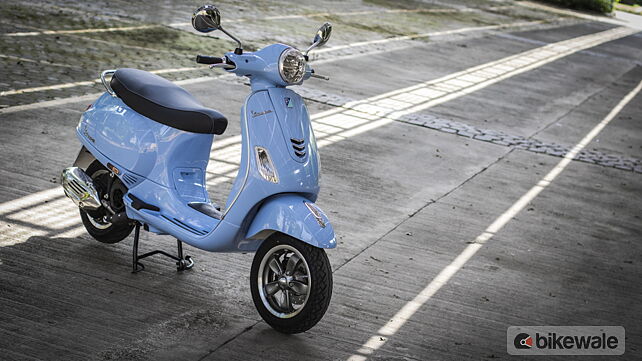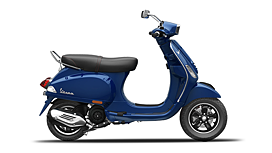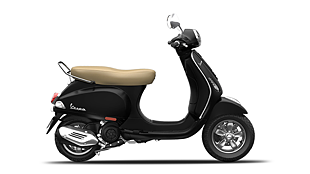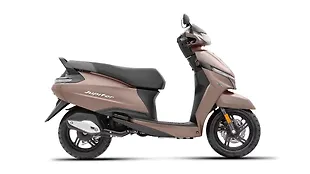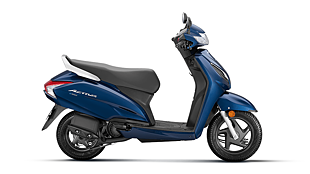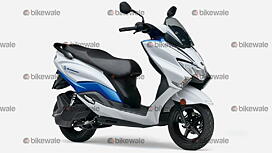Introduction

Piaggio has always been focused on delivering exclusivity and a premium feel to its customers with its Vespa scooters in India. While the ideology continues to remain the same, the transition to BS6 era has brought some changes to the Vespa offerings. These alterations go beyond cleaner engines and aim to facilitate the scooters with more practicality.
To scrutinise the revisions and how they fare in the real world, we spent some time with the new Vespa VXL 150 BS6. What made things even more interesting here was the presence of the new Racing Sixties limited edition SXL 150, which brings an additional aesthetic oomph and exoticism to the mix. Now, with no further ado, let’s see how our day unfolded with these two Italian stunners.
The Visuals

The retro-inspired Italian design of the Vespas is one of their strongest traits and that have been retained in the BS6 models as well. Hence, the VXL 150 BS6 is still an elegant-looking scooter sporting plush and curvy body panels with chrome accents. But for those who wish to draw more attention on the road, the Racing Sixties edition of the SXL 150 is a true charmer.

Adorning white paint all across the bodywork, it wears red stripes on certain areas which are inspired by the Vespa racing scooters from the 1960s. Lending it a sportier appeal is the blacked-out treatment on the mirrors and headlamp bezel, which are chrome-finished on the standard models. Setting it further apart are the glittering golden-coloured alloy wheels. Besides these cosmetic changes, the limited edition is mechanically the same as the standard VXL 150 and SXL 150 models.

Now, may it be the Racing Sixties or standard trims, the Vespa scooters continue to exude opulence with splendid paint quality, fit, and finish, with the only niggle being the slightly substandard plastic quality of switches.
The Package

Although the Vespas have retained their old-school styling, they have become more modern on the feature front. The halogen headlamp has been replaced by a full-LED unit while a USB charger and a boot lamp are also a part of the package now. Meanwhile, the analogue speedometer with a small LCD dash has remained untouched. Stowage needs are still fulfilled by a decently-sized under seat compartment, large enough to store a half-face helmet, and a closed storage box up front, which can take in small items such as a mobile phone and a cold drink can.

Vespa has also kept the cycle parts unaltered. Underpinned by a monocoque chassis, it rides on an 11-inch wheel with a single-sided link-type suspension up front and a 10-inch wheel with a monoshock at the rear. Braking is handled by a disc-drum combination with single-channel ABS. What’s majorly revamped is the engine which not only gets fuel-injection in place of a carburetor for cleaner emissions, but the displacement has also shrunk from 154cc to 149cc. Of course, the power figures too have gone marginally down to 10.2bhp and 10.6Nm.
The Ride

The drop in performance numbers isn’t very noticeable on the road as it is still a peppy machine with sprightly acceleration. Wring the throttle spiritedly and it quickly picks up pace, accompanied by a throaty exhaust note which is typical of a Vespa. The shift from carburetor to FI has resulted in a slightly crisper throttle response, while the vibrations are also more contained now. One can feel a minor buzz on the footboard and handlebars but only above speeds of around 60-70kmph. Another reason for the lively performance of the scooter is its light weight of 114kg (kerb).

The low kerb weight of the Vespa also contributes to its nimble handling and flicking it through lanes is effortless. Further aiding its agility are compact dimensions and the rigid monocoque chassis which concertedly deliver a fun and engaging experience. Also, the extremely short turning radius means taking U-turns and squeezing it through tight parking spots is easy-peasy.

Another desirable aspect of the BS6 Vespa is its ride quality. While the previous models were plagued with a bumpy ride quality, courtesy of the stiff suspension setup, the BS6 iteration gobbles up most of the potholes, bumps and ruts with much more ease now. Notably, the company says it has been progressively working on this area for a long time. Stopping power comes from a disc brake up front which quickly cuts down the pace while ABS makes sure the wheel doesn’t lock up. However, it could do with slightly more bite. The rear brake, meanwhile, has good progression but lacks feel significantly.
Our Take

In its BS6 avatar, the Vespa VXL 150 is the same charming scooter with a brisk performance, agile handling, and easy-to-manage weight and dimensions. And the improved ride quality only adds to its positive facets. But the biggest chink in the Vespa’s armour is its over the top price tag. The VXL 150 BS6 costs Rs 1.23 lakh while the Racing Sixties edition is pegged at Rs 1.34 lakh (both prices are ex-showroom). The latter is undoubtedly gorgeous but demands too hefty a premium for only a cosmetic job.

Despite the exorbitant cost, these scooters are devoid of things like a parking brake, external fuel filler cap, and a data-extensive digital dash, which have become a norm these days. But then, Vespas are more of lifestyle products meant for buyers who prefer form over function, exclusivity over practicality, and boldness over subtlety.
Photography by Kapil Angane
Gallery
1/150
Vespa SXL 150 Front Right Three-Quarter
Double Tap to Zoom











